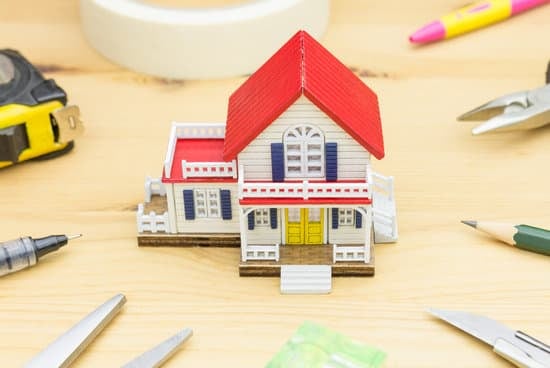Embarking on home improvement projects can be an exciting and rewarding endeavor, but before you start tearing down walls or adding new features to your property, it is crucial to understand the importance of permits. In this article, we will guide you through the process of obtaining a permit for home improvements, ensuring that your project is not only successful but also compliant with local regulations.
When it comes to home improvements, getting a permit is more than just a formality – it is a legal requirement aimed at ensuring the safety and integrity of your property. Understanding how to get a permit for home improvements is essential to avoid costly fines, delays in your project, or even having to undo work that was done without the necessary approvals.
In the following sections, we will provide you with a step-by-step guide on obtaining a permit for home improvements, highlight the importance of researching local regulations specific to your area, explore the different types of permits required for various projects, offer tips on filling out the application correctly and efficiently, and shed light on common mistakes to avoid during the process.
By familiarizing yourself with these key points, you will be better equipped to navigate the permit process smoothly and ensure the success of your home improvement project.
The Process
When planning home improvement projects, one crucial step that homeowners often overlook is obtaining the necessary permits. Permits are required by local governments to ensure that construction or renovation work complies with building codes and zoning regulations. Without the proper permits, you may face fines, project delays, or even have to undo completed work. Here is a step-by-step guide on how to get a permit for home improvements to help you navigate this process smoothly.
The first step in obtaining a permit for your home improvement project is to determine what type of permit you need. Different projects may require different permits, such as building permits, electrical permits, plumbing permits, or mechanical permits. Researching the specific requirements for your project based on local regulations is essential. Contact your local building department or visit their website to understand what permits are needed for your particular project.
Once you have identified the necessary permit(s) for your home improvement project, you can proceed with the application process. This typically involves submitting an application form detailing the scope of work, along with any required documents like construction plans, site surveys, and proof of insurance. Be sure to fill out the application accurately and completely to avoid delays in processing. Some areas may also require a review by zoning officials before issuing the permit.
| Permit Type | Typical Cost |
|---|---|
| Building Permit | $400-$1,500 |
| Electrical Permit | $50-$300 |
| Plumbing Permit | $100-$500 |
Securing a permit for home improvements may seem like an additional hassle and cost, but it comes with several benefits. Permits provide assurance that the work meets safety standards and building codes, which can increase the value of your property in the long run.
Additionally, having all necessary permits in place can protect you from legal issues down the line and give you peace of mind knowing that your project is legitimate and up to code. By following these steps on how to get a permit for home improvements, you can ensure a smooth and successful renovation or construction process from start to finish.
Researching Local Regulations
When embarking on a home improvement project, one of the crucial steps is understanding and researching the local regulations that govern such activities in your area. Failure to comply with these rules could result in fines, delays, or even having to undo completed work. Here are some key steps on how to navigate through the process of familiarizing yourself with local regulations:
- Start by contacting your local building department or planning office to inquire about the specific permits required for your project.
- Ask about any zoning restrictions or building codes that may impact your plans. It’s essential to know if there are any limitations on the size, height, or location of your intended improvements.
- Research historical preservation requirements if you live in a designated historic district. These regulations may impose additional restrictions on renovations and alterations to maintain the architectural integrity of the neighborhood.
Understanding and adhering to local regulations is not only a legal necessity but also ensures that your home improvement project meets safety standards and quality requirements. By taking the time to research and comply with these rules, you can avoid costly mistakes and ensure a smoother approval process for your permit application.
- Consider consulting with a licensed contractor or architect who is familiar with local regulations. They can provide valuable insights and guidance on navigating through the permit process.
- Attend any informational sessions or workshops offered by your local government on obtaining permits for home improvements. These resources can help clarify any confusion and provide additional support as you move forward with your project.
- Keep communication lines open with the permitting office throughout the process. If you have any questions or concerns about specific regulations, don’t hesitate to reach out for clarification. Building a positive relationship with the permitting officials can facilitate a smoother approval process.
Types of Permits
When it comes to home improvement projects, understanding the different types of permits required is essential to ensure that you are in compliance with local regulations. From minor renovations to major structural changes, each type of project may require a specific permit. Knowing which permit is needed for your particular project can save you time and resources in the long run.
Building Permit
One of the most common types of permits required for home improvement projects is a building permit. This permit is necessary for any construction-related work that alters the structure or footprint of your home. Examples include adding a room, renovating a kitchen, or building a deck. Building permits typically involve inspections throughout the project to ensure that the work meets safety and building code standards.
Electrical Permit
For projects involving electrical work, such as installing new lighting fixtures, upgrading wiring, or adding outlets, an electrical permit is usually required. Electrical permits ensure that the work is done by a licensed electrician and complies with electrical codes to prevent hazards like fires or electrocution. It’s important to have professional electricians handle this type of project to guarantee safety and compliance with regulations.
Plumbing Permit
If your home improvement project includes plumbing work like installing new pipes, relocating fixtures, or upgrading water heaters, a plumbing permit is necessary. This permit ensures that the plumbing modifications meet plumbing codes and standards to prevent leaks, contamination, or other issues. Hiring licensed plumbers for these types of projects can help you avoid costly mistakes and ensure that your plumbing system functions properly.
By understanding the various types of permits needed for different home improvement projects, homeowners can navigate the permitting process more effectively and avoid potential delays or fines. Consulting with local authorities or professionals in each field can provide valuable guidance on which permits are required for specific projects and how to obtain them correctly. Remember that securing the necessary permits not only keeps you compliant with regulations but also ensures the safety and quality of your home improvement endeavors.
Permit Application
Understanding the Permit Application Process
When it comes to making home improvements, applying for a permit is an essential step in ensuring that your project complies with local regulations and safety standards. The permit application process may seem daunting at first, but with the right information and guidance, it can be a smooth and straightforward procedure. Knowing how to fill out the application correctly and efficiently is key to getting your project off to a successful start.
Gathering Necessary Information
Before you begin filling out the permit application, it’s important to gather all the necessary information and documents required by your local building department. This may include detailed plans of the proposed project, specifications on materials to be used, contractor information, and any other relevant details. By having all the pertinent information organized and readily available, you can expedite the application process and avoid delays.
Seeking Professional Assistance
For complex home improvement projects or if you’re unfamiliar with the permit application process, it’s highly recommended to seek professional assistance. Hiring a licensed contractor or architect who has experience dealing with permit applications can help ensure that everything is filled out correctly and in compliance with local regulations.
They can also provide valuable guidance on navigating through any potential challenges or issues that may arise during the permitting process. Remember, getting a permit for home improvements is not just about following rules; it’s about ensuring the safety and integrity of your project.
Common Mistakes to Avoid
When considering embarking on a home improvement project, one crucial aspect that should not be overlooked is obtaining the necessary permits. However, navigating the permit application process can often be daunting and complex. In this section, we will discuss some common mistakes to avoid when applying for a permit for home improvements, ensuring a smoother and more efficient process.
To help you steer clear of potential pitfalls when seeking a permit for your home improvement project, here are some key mistakes to watch out for:
- Ignoring local regulations: Failure to research and understand the specific rules and guidelines in your local area can lead to delays or even fines. Make sure to thoroughly research and comply with all regulations before starting any work.
- Incomplete or inaccurate applications: Providing incomplete or incorrect information on your permit application can result in delays or the rejection of your request. Double-check all details and ensure that all required documents are included.
- Skipping inspections: Some homeowners may try to bypass the inspection stage to save time or money, but this can have serious consequences. Inspections are essential for ensuring that the work meets safety standards and building codes.
By avoiding these common mistakes and following the correct procedures, you can streamline the process of obtaining a permit for your home improvements. Remember, taking the time to adhere to regulations and guidelines will ultimately benefit you in the long run by ensuring a successful and compliant project completion.
Permit Costs
When embarking on a home improvement project, one crucial aspect that homeowners often overlook is the cost associated with obtaining the necessary permits. Understanding the fees involved in securing a permit is essential to budgeting and planning your project effectively. Permit costs can vary depending on the type of improvement you are making, the size and scope of the project, and even your location.
One of the first steps in determining permit costs is to research the specific requirements in your area. Local municipalities have different fee structures for permits, and it’s important to familiarize yourself with these regulations beforehand. Some areas may have flat fees for certain projects, while others calculate fees based on factors such as project cost or square footage.
In addition to the actual permit fee, there may be additional costs associated with getting a permit for home improvements. These can include inspection fees, plan review fees, and any other administrative charges.
It’s crucial to factor in these extra expenses when budgeting for your project to avoid any surprises down the line. By understanding all of the costs involved in obtaining a permit for home improvements, you can ensure that your project stays on track both financially and legally.
Benefits of Getting a Permit
Getting a permit for home improvements may seem like an additional hassle, but it is a crucial step that should not be overlooked. The process of obtaining a permit ensures that your project meets safety standards, building codes, and zoning regulations. By following the proper procedures and guidelines, you can avoid potential legal issues in the future and protect the value of your property.
One of the first steps in understanding how to get a permit for home improvements is to research the specific rules and regulations in your local area. Each city or county may have different requirements when it comes to permits for home renovations. It’s important to familiarize yourself with these regulations to avoid any delays or complications during the permitting process. Local government websites or contacting the building department directly are great resources to find this information.
When applying for a permit, make sure to fill out the application correctly and efficiently. Provide accurate information about your project, including detailed plans and specifications if required. Double-check all documentation before submitting to ensure there are no errors or missing information that could result in delays. By taking the time to complete the application accurately, you can expedite the approval process and move forward with your home improvement project sooner.
| Key Point | Benefit |
|---|---|
| Ensures compliance with safety standards | Protects property value and avoids legal issues |
| Researching local regulations | Avoids delays and complications during the permitting process |
| Filling out application correctly | Expedites approval process and moves project forward sooner |
Conclusion
In conclusion, obtaining a permit for home improvements is a crucial step in ensuring the safety, legality, and quality of your project. By following the necessary permit process, you are not only complying with local regulations but also protecting yourself from potential liabilities down the road. Understanding the importance of permits and taking the time to secure them demonstrates a commitment to professionalism and responsible homeownership.
Researching local regulations is key to successfully obtaining a permit for your home improvement project. Each area may have specific rules and requirements that you need to adhere to, so it’s essential to do your due diligence before starting any work. Knowing what types of permits are necessary for your particular project will save you time and prevent any delays or setbacks along the way.
To ensure a smooth application process, pay close attention to filling out the permit application correctly and efficiently. Avoid common mistakes that could lead to rejection or additional fees. While there may be costs associated with obtaining a permit, the benefits far outweigh them.
The peace of mind knowing that your project is up to code and properly permitted is invaluable in the long run. By following these steps on how to get a permit for home improvements, you can embark on your project confidently and responsibly.
Frequently Asked Questions
What Can a Homeowner Do Without a Permit in NY?
In New York, homeowners can typically do small-scale projects without a permit, such as painting, replacing flooring, and installing new countertops. However, major renovations like structural changes or additions usually require a permit.
Do You Need a Permit to Remodel in Texas?
In Texas, the requirements for permits to remodel can vary depending on the city or county regulations. Generally speaking, minor cosmetic changes like painting or installing new cabinets may not need a permit. However, larger projects involving structural modifications or electrical work will likely require one.
What Requires a Building Permit in Illinois?
In Illinois, building permits are typically required for projects that involve any structural changes to a property. This includes additions to the home, new constructions, alterations to load-bearing walls, installation of new plumbing or electrical systems, and remodeling projects that impact the overall structure of the building.
It is important to check with local building authorities to determine specific permit requirements for your project in Illinois.

I’m thrilled to have you here as a part of the Remodeling Top community. This is where my journey as an architect and remodeling enthusiast intersects with your passion for transforming houses into dream homes.





